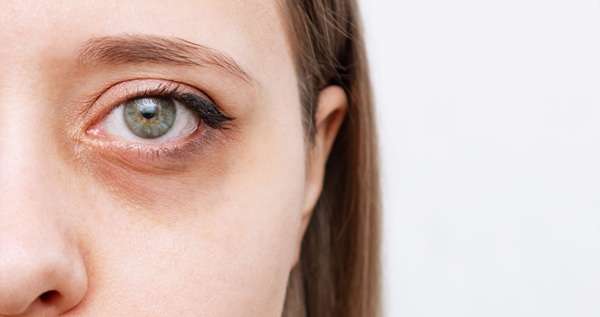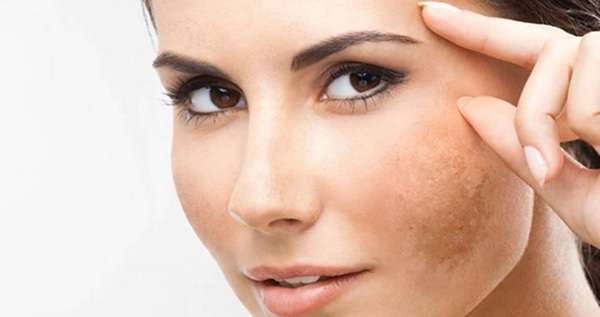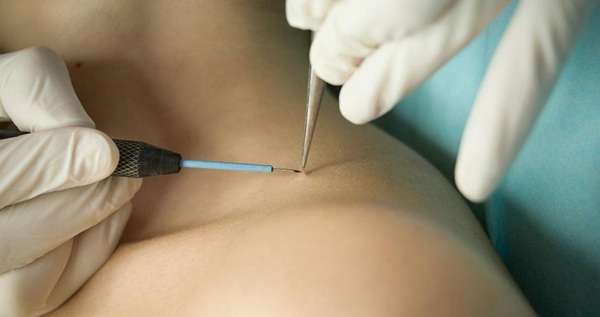Get the Best Ablative Erbium YAG Laser Treatment in Islamabad
What is Ablative Erbium Laser Skin Resurfacing?
The erbium laser is less potent than the ablative CO2 laser, causing less harm to nearby cells because it absorbs laser waves more efficiently. This procedure promotes collagen growth, tightens the skin, and removes damaged or unevenly pigmented skin cells. The erbium laser is less potent than the ablative CO2 laser, causing less harm to nearby cells. It promotes faster healing, improved blood clotting, and faster recovery. Results may not be as noticeable as with CO2 lasers but erbium is often a safer choice for individuals with darker skin tones.
What Cosmetic Concerns are Treated from Ablative Erbium YAG Laser Treatment in Islamabad?
This ablative erbium YAG laser can help with different skin problems such as:
- Fine Lines & Wrinkles: Ablative laser treatment encourages collagen production to tighten and reduce the appearance of fine lines and wrinkles.
- Facial Skin Laxity: The stimulation of collagen firms the skin, addressing issues of sagging.
- Uneven Skin Tone: By removing old skin layers, ablative laser treatment unveils deeper, healthier skin layers, promoting a more even skin tone.
- Uneven Skin Texture: Ablative laser treatment eliminates dead skin cells, resulting in smoother skin texture.
- Rosacea: Damaged skin cells are removed, making way for the growth of new.
- Melasma: Ablative lasers remove hyperpigmented skin cells, revealing healthier skin for a more balanced skin tone.
- Acne Scars: Ablation of scar tissue promotes the growth of new cells, aiding in the improvement of acne scars.
Who is the Ideal Candidate for an Ablative Erbium YAG Laser Treatment in Islamabad?
The ideal candidate for ablative erbium laser skin resurfacing has some damage from the sun, fine lines or wrinkles, sagging skin especially around the eyes, However, if someone has dark skin, this is not an ideal decision because it may result in areas with complex skin color.
What is the Average Recovery Associated with an Ablative Erbium YAG Laser for Acne Scars?
Most people require one to two weeks of recovery time shortly after ablative erbium laser skin resurfacing. During this time, your skin may appear bright red and highly sensitive, with some irritation and itchiness. The redness or the pinkness may remain for several weeks. Applying moisturizing creams and taking proper care of the skin, and avoiding excessive exposure to the sun can all help to speed up recovery.
What are the Potential Side Effects of an Ablative Erbium YAG Laser Treatment in Islamabad?
Burns or damage to skin cells, scars, uneven dark or light patches on the skin, the return of wounds from colds, bacterial infections, and the development of small white bumps known as milia are all possible side effects of using a strong erbium laser on the skin.
What can Someone Expect from the Results of an Ablative Erbium YAG Laser for Acne Scars?
After getting ablative erbium laser skin resurfacing, you won’t see instant changes. The results will show up gradually in a few weeks as your skin heals. It’s important to stay away from the sun and use sunscreen right after the treatment to prevent uneven skin color. However, you should keep in mind that your skin’s appearance after ablative erbium laser treatment can still be influenced by aging and sun damage in the long run.
What is the Ablative Erbium YAG Laser Price in Pakistan?
Ablative erbium yag laser price in Pakistan ranges from a few thousand to ten thousand Pakistani Rupees. Also, Ablative erbium yag laser price in Pakistan varies based on where you are, who is doing the procedure, and how extensive the treatment is.
Ablative Erbium YAG Laser Before and After
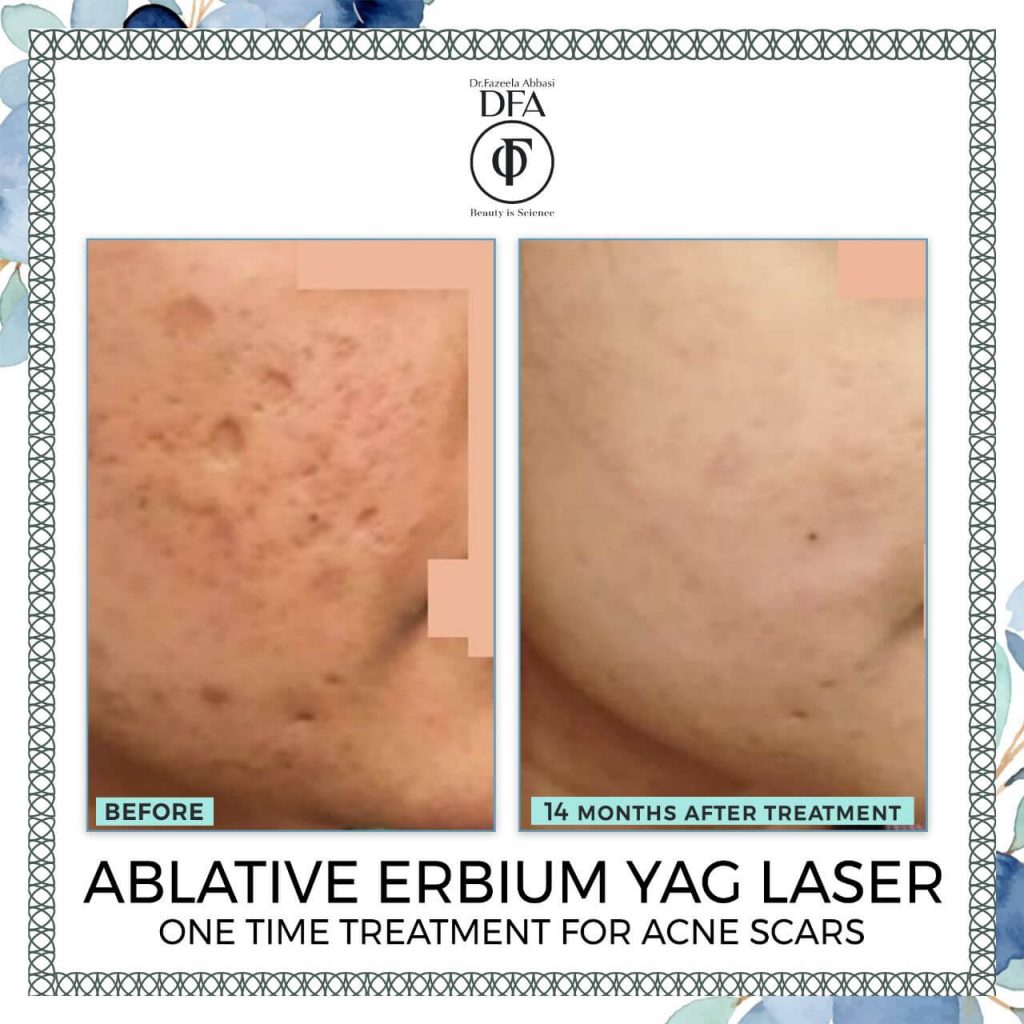
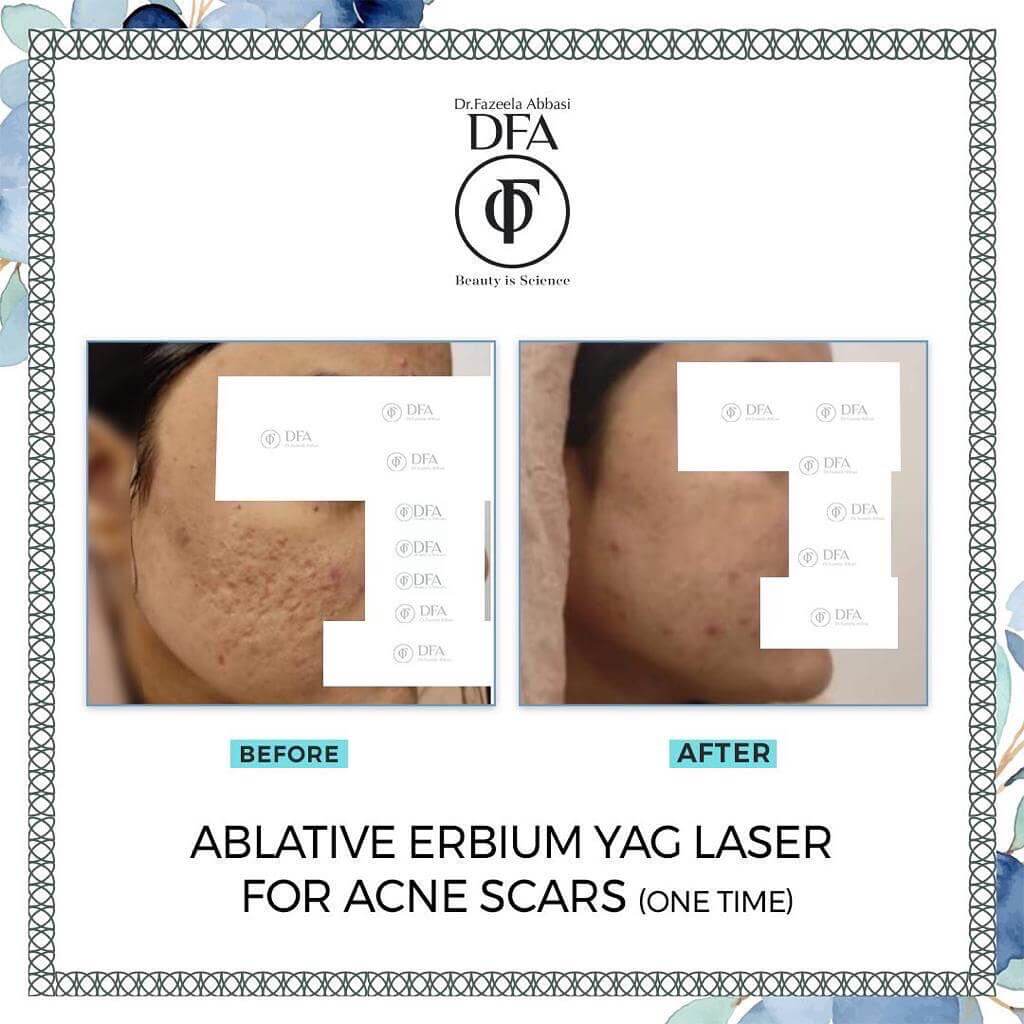
Consultation
Make your skin with the powerful ablative erbium YAG laser! Say goodbye to skin problems and welcome yourself to a glowing, refreshed appearance. Make your appointment at DFA clinic today to experience the boosting effects for yourself. Start your journey to smoother, firmer skin today.
FAQs
Topical anesthesia or numbing gel/cream is used.
The treated area looks like a fresh wound. It is crucial that the laser-treated area is kept moist by the application of ointment/moisturizer prescribed by the dermatologist to promote reepithelialization.
Treated area after one week of procedure starts crusting & looks pinkish.
Treated area after 1-2 months starts gaining pigmentation & skin color starts coming back to normal.
Mostly just one session.
About 2 to 4 months.
One or two moles are treated in one sitting and the response of the skin is monitored after a period of 1-3 months. Depending on the skin response, the next treatment addressing the whole face is planned out accordingly.
Spot testing is recommended in very dark and wheatish skin complexions.

